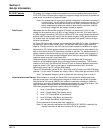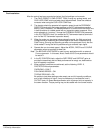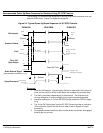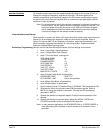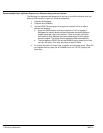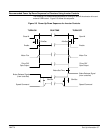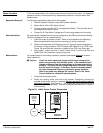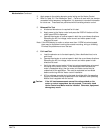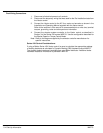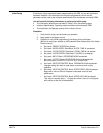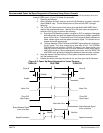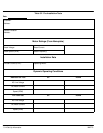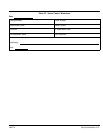
Section 1
General Information
Set-Up Information 5-9MN770
Modernization Continued
3. Apply power to the existing elevator control wiring and the Vector Control.
4. Refer to Table 5-2 “Pre-Installation Tests”. Perform all tests with the elevator
connected
in this temporary configuration. It is important to record all information
for future use. These tests are performed with the existing elevator control.
5. Balanced Car Test
a. A balanced elevator car is required for this test.
b. Apply power to the Vector control and press the DISPLAY button until the
motor speed RPM is displayed.
c. Operate the elevator at contract speed in both the up and down directions.
Recording the AC line voltage, motor current and motor speed in both
directions of travel.
Note: If the RPM display is erratic or varies more than 10 RPM at contract speed,
there may be a problem involving the encoder mounting, wiring or shielding.
Eliminate the problem and rerun the test.
6. Full Load Test
a. Load the elevator car to its rated capacity. (Use a distributed load, not a
point load).
b. Operate the elevator at contract speed in both the up and down directions.
Recording the AC line voltage, motor current and motor speed in both
directions of travel.
c. Verify the motor current under full load at contract speed does not exceed
the rating of the Vector Control. If the measured current exceeds the
motor’s nameplate rating, then the motor and Vector control may be
undersized for the application. This must be evaluated and corrected
before continuing with the Vector control installation.
d. AC line voltages recorded during the tests should be within the operating
range for the Vector control as specified in the Installation and Operating
Manual that is supplied with the control.
Caution: If the full load measurements exceed the ratings stated on the
motor or control nameplates, do not proceed. A correctly sized
Vector Control and Motor must be installed. Otherwise, equipment
damage may result.



